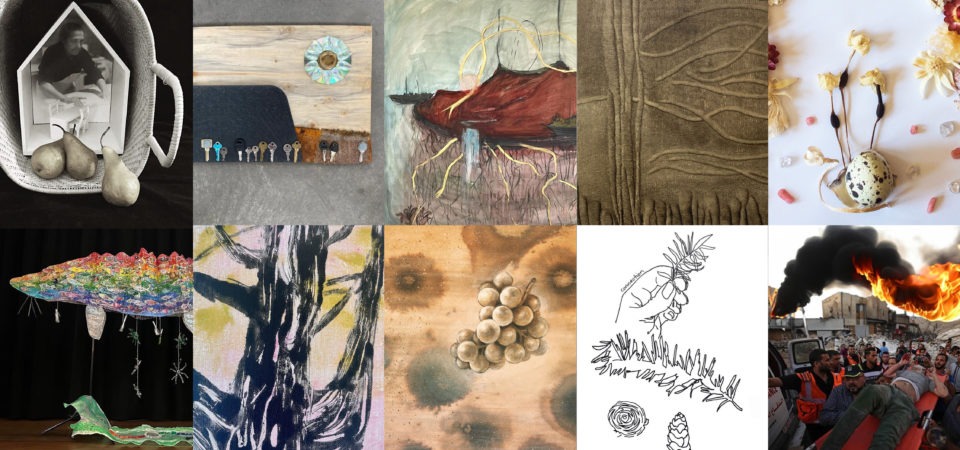This is the 19th What’s Next for Earth online exhibition based on Think Resilience, a free online course written by Richard Heinberg and produced by Post Carbon Institute.
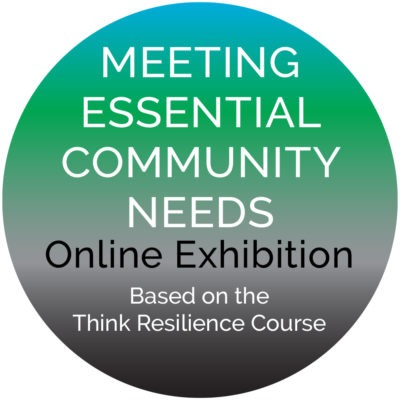 What’s Next for Earth follows the course, one lesson per art call. To respond to this art call, we asked the artists to signup and watch the course. This exhibition is part of the fifth chapter of the course: Economy and Society.
What’s Next for Earth follows the course, one lesson per art call. To respond to this art call, we asked the artists to signup and watch the course. This exhibition is part of the fifth chapter of the course: Economy and Society.
“Building community resilience ultimately has to come to grips with the infrastructure that enables any community to function. This lesson looks at food, water, energy, and money systems, and how these can be made more resilient. If any one of these essentials goes haywire, a community loses its support capacity very quickly.”
– Richard Heinberg, Post Carbon Institute
The video transcript of the lesson here.
ARTISTS
Susan Bercu, Ember De Boer, Alison Lee Cousland, Yvonne C. Espinoza, Ries Faison, Diane Farris, Jacqui Jones, Deborah Kennedy, Celia Kettle, Nancy D. Lane, Rosalind Lowry, Quin De La Mer, Meredith Nemirov, Peggy Rose, Susan Smith, Teresa Stern, Kim Tanzer, Marcela Villasenor, Karen Viola.
EXHIBITION
Susan Smith
RESILIENCE
Video
“Reliance of local farms on unsustainable inputs”- Richard Heinberg.
This offering, “Resilience”, addresses the exploitation of labor and the effects of herbicide use on farmworkers. So we can enjoy unblemished salad.
©2023 Susan Smith
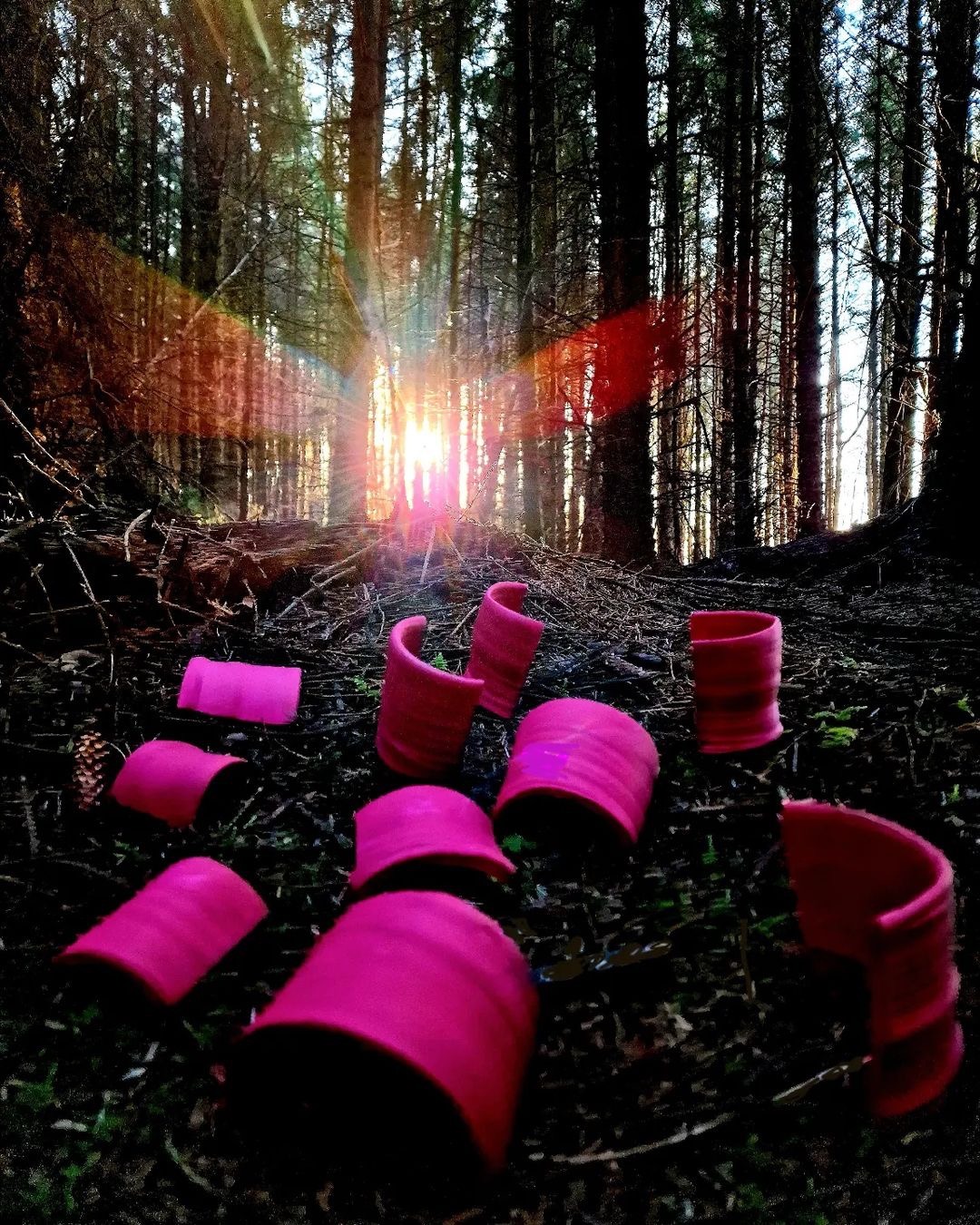
Rosalind Lowry
WASTELAND
Materials: Hand-thrown ceramics
Dimensions: 5ft x 5ft
Location: temporary installation in Portglenone Forest, County Antrim, Ireland
The work is about the importance of community resilience regarding food, water, and energy. It’s a series of hot pink cans discarded in a local beauty spot.
The installation is based on reducing food miles and long food supply chains and exporting all the associated waste materials. Government trade data shows the top 3 export countries for UK plastic waste are Turkey, Malaysia, and Poland, with tonnes of rubbish exported annually.
©2023 Rosalind Lowry
Meredith Nemirov
HEADWATERS
Acrylic on cradled wood panels
30″ x 40″
In lesson 20, Meeting Essential Community Needs, of the Think Resilience course from the Post Carbon Institute, Richard Heinberg talks about doing the resilience work to maintain the health of natural lakes, rivers and streams. Building community resilience starts with people and their energy, interests, needs and creativity. Colorado is called the Headwater State because eight major river basins originate here. Living at 7000 feet in the San Juan Mountains I am acutely aware of where our water comes from. This triptych depicts three stages of a river; Source, where the snowmelt starts the water’s journey, and continues to Meander through the watershed on it’s way to it’s final destination, the estuary or the mouth of the river.
©2023 Meredith Nemirov
Jacqui Jones
TIPPING POINT
Installation
Materials: zinc buckets, burnt ocean maps
Size: 120cm W x 30cm H x 200cm L
“Climate change implies more droughts and more intense rain events so developing community resilience therefore also means planning for water emergencies. Much of this planning will be geography specific, since coastal communities will face challenges different from those of inland communities’. Richard Heinberg, Post Carbon Institute.
The installation ‘Tipping Point’ highlights the importance of water resilience in times of drought, storms and rising sea levels.
©2022 Jacqui Jones

Ember de Boer
HYDRO-STENCIL ON CONCRETE
16″ x 16″
November 2023
View Gallery
This piece represents a deep belief at the core of my sustainable and environmental work that I have not addressed directly before-
I don’t believe personal guilt tactics are a helpful construct in fighting for a more sustainable and equitable future.
Responsibility and education remain at the forefront of the battle for a brighter future of climate action. However, carrying shame and dismay can be a woefully regretful way to impact positive change.
For me, this piece is about the recent ban on greenwash labels and how misinformation, misplaced confidence, and consumer brainwashing have led to a larger problem around the relationships we have built with our habits and the root cause of our deepening environmental crisis- for which corporations have been cunning and deceitful for decades.
From Richard Heinberg, Post Carbon Institute on “Meeting Community Needs”: “We’ve talked about covering four bases: food, water, energy, and money. If anyone of these essentials goes haywire, a Community loses its support capacity very quickly. Building community resilience means rolling up our sleeves and getting involved in the nuts and bolts of how society works.”
©2023 Ember de Boer
Diane Farris
WHEN ENOUGH FEELS LIKE ABUNDANCE
Meeting Essential Community Needs brings to mind a time after college when I spent a few weeks in a small Italian hill town where the” food, water, energy, and money” Heinberg highlights as essential community needs were respected, savored, and shared. In that town and time, the warmth of community and the celebration of seasonal resources made “enough” often feel like abundance. The town square and very local market, the lively coffee bars, windows crowded with tomatoes and herbs, the small restaurants with a half dozen tables – especially the one where I was lucky enough to help out in the kitchen – made a pattern that has inspired me since.
The Pear Basket image was made years ago, an homage to that formative time and place. In it, Signora Adele rolls out pasta with a broom handle; a table awaits company and fresh produce spills from a market basket. Enough/Lemons is a new image – with Pear Basket nearby. Lemons from our tree represent today’s resources, awaiting shared preparation and enjoyment with children, family, and friends.
The page with “enough” is from a century-old dictionary. (It occurs next to “enormous,” which is defined as “excessive.”) We continue to seek new ways into our local community, resources, and systems, and we are grateful for the rich and welcoming community of WNFE.
©2023Diane Farris
Nancy D Lane
IT’S GETTING HOTTER, TOO, AT ULURU
Found object assemblage wall sculpture created from plywood, black plastic, rusted metal, keys, and clear plastic parts from a chandelier.
35 x 57cm
The focus of this artwork is a glittering ‘sun’ symbolizing the increased global warming caused by burning fossil fuels, felling forests, and intensive livestock farming. This contrasts with the activities of Indigenous Australians, who have cared for Country for over 65,000 years. Their diverse environmental activities have contributed to the retention of biodiversity, improved landscape health, and climate change mitigation. ‘Uluru’, an iconic geological formation identified with Australia’s Indigenous people, has ‘guides’ and visitors’ at its base. This suggests our need to collaborate to share knowledge and build community resilience as a ‘key’ to combating the climate crisis.
It was encouraging that at COP28, Australian Minister for Climate and Energy Chris Bowen stated: “At the heart of the action on climate change must be profound respect for those people who have cared for our respective lands for millennia—Indigenous people across the world.” He also recommended including First Nations people in the Australian government’s response to the climate crisis.
As Richard Heinberg stated, Building community resilience starts with people…. But it ultimately has to come to grips with the infrastructure that enables any community to function.” And I would add: Not just to function, but to survive. Australia’s First Nations peoples are a living example of having built community resilience.
©2023 Nancy D Lane
Dorothy Ries Faison
CONTRADISTINCTION (BUT PRAYERS ARE IMPORTANT)
Watercolor, water-soluble crayon, charcoal, collage, bronze powder on wove paper
66 x 59 in, 168 x 150 cm
2023
“Building community resilience ultimately has to come to grips with the infrastructure that enables any community to function. This lesson looks at food, water, energy, and money systems, and how these can be made more resilient. If any one of these essentials goes haywire, a community loses its support capacity very quickly.” – Richard Heinberg
Once focused on sustainable community solutions, doors need to open to climate refugees.
©2023 Dorothy Ries Faison

Quin de la Mer
DISTILLATIONS OF HUMAN HISTORY, LIVERPOOL OIL SPILL (DETAIL)
Oil on canvas, waste stream pigment (dried petroleum from an oil spill) foraged on Crosby Beach in Merseyside, England,
2022
We cannot meet Essential Community Needs if we continue the destructive path we have built.
STOP WAR
STOP OIL
STOP UNSUSTAINABLE AGRICULTURE
STOP…
STOP…
There’s no way around it. There’s no easy path. There’s no comfortable solution.
Post Carbon Institute and Richard Heinberg note that if any essential needs (food, water, energy, money systems) malfunction, a community rapidly loses its ability to operate effectively.
We must stop killing our global ecosystem, Earth.
In my opinion, our consistent choices and the actions that follow indicate we are aiming for collective self-murder, and we intend to take life on Earth with us.
These are dark times, and we are very good at pretending otherwise.
©2023 Quin de la Mer
Alison Lee Cousland
EARTH AND HEAVEN. No. 10 AND 11 ARRANGEMENTS
Arrangements
“Building community resilience starts with people: Their energy, interests, needs, and creativity.” ~Richard Heinberg.
These arrangements tell of the movement of the ocean within an 11:11 that has now transitioned into a ‘Temple for Nature.’
The theme: The movement of the ocean: Rockpools and different life forms brought together by the movement of tides and the life forms themselves Can also be seen as individuals who were once content to ‘do their own thing’ now realize the need for co-creation at a grassroots community level so that, in the words of Zach Bush: Humanity is called back into alignment with Nature.
The more we lean into designing our personal and professional lives around nature’s natural rhythms, the more ‘in flow’ and, ultimately, productive we will become. ~Zach Bush. The Institute of Natural Law.
In the early arrangements of this series, the isolated fragments from land and sea (the individual) with white space around them have gradually come together as organic clusters (communities founded on earth-based values) still with the same white space around their groupings.
I’m starting to see that the white space represents ‘The Peace of the Universe which transcends all understanding’ ~ Supporting both our sovereignty and community resilience.
Also, surprisingly, These pieces connect to collage work I did in the early 2000s featuring the 11:11 ~ Only the 11:11 is far more subtle now.
©2023 Alison Lee Cousland
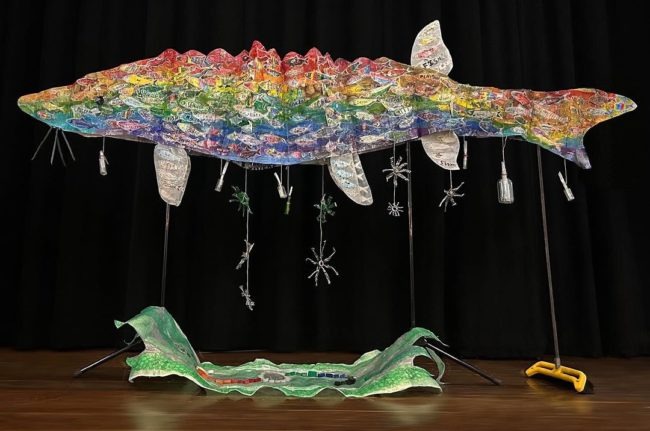
Karen Viola
TREASURE SCHOOL
Installation
‘Treasure School’ is my offering to the What’s Next for Earth art call, Meeting Essential Community Needs, based on the Think Resilience course by Post Carbon Institute. Water is not only an essential need for communities; water makes life possible on Earth. As Richard Heinberg explains in this chapter, “The key to water resilience is the health of natural regional lakes, rivers, and streams. So, making sure they are free from pollutants and that indigenous species are thriving should be the principal resilience work in this area.”
This artwork supports the work of Riverkeeper, which has been doing this essential work for decades, protecting the Hudson River and the surrounding watersheds, which provide clean drinking water to billions of people in New York. The work included a culminating slide presentation for Washington Irving School students whose decorated fish were integral to the art.
The piece is constructed almost entirely out of fused polyethylene plastic packaging in the shape of the largest Atlantic sturgeon ever sighted in the Hudson River, at 14 feet long. The Atlantic sturgeon is one of many fish species listed as endangered. Additional embellishments were made from bottles, caps, and other trash removed from the Hudson Estuary at the Riverkeeper Sweep 2023 event in May.
An Arts Westchester Voices for Change grant made this project possible. Special thanks go to Katie Leung for her support and to Kathleen McCarthy-Udoff who facilitated the fish-decorating sessions at the school. This work considers the meaning of ‘trash to treasure,’ where the real treasure lies within the hopes, hearts, and minds of children the world over who will be forging upstream in a mess the rest of us made. Rise up and raise them up!
©2023 Karen Viola
Teresa Stern
A TALE OF TWO SISTERS… ONE LOST, ONE SAVED
Oil monotype on paper
Each is 8″x10″
In the first image, Astra, a draping Western Red Cedar, will be felled.
In the second image, her sister, Luma, another Western Red Cedar nearby, was saved thanks to countless volunteer hours and tribal intervention.
Two tree sisters, one lost, one saved. Both are culturally modified, significant trees that *should* have been protected by the Seattle Tree Ordinance but were not. Instead, it took hundreds of volunteer hours and tribal intervention to save Luma. Astra will not be so fortunate and is slated for removal.
In the City of Seattle, as in many other cities, our trees are a vital part of our shared urban infrastructure and a vital component of our community resilience. Our large trees are best set to weather our new hotter, drier climate reality that is already happening. They also help keep us all cooler, retain steep slopes, and capture carbon. These arboreal workhorses should be preserved where possible, especially when needed housing and other developments can be created while keeping our most significant tree sisters in place. Sometimes it takes extra creativity or flexibility, but we can add housing while keeping the City welcoming and livable for all.
©2023 Teresa Stern
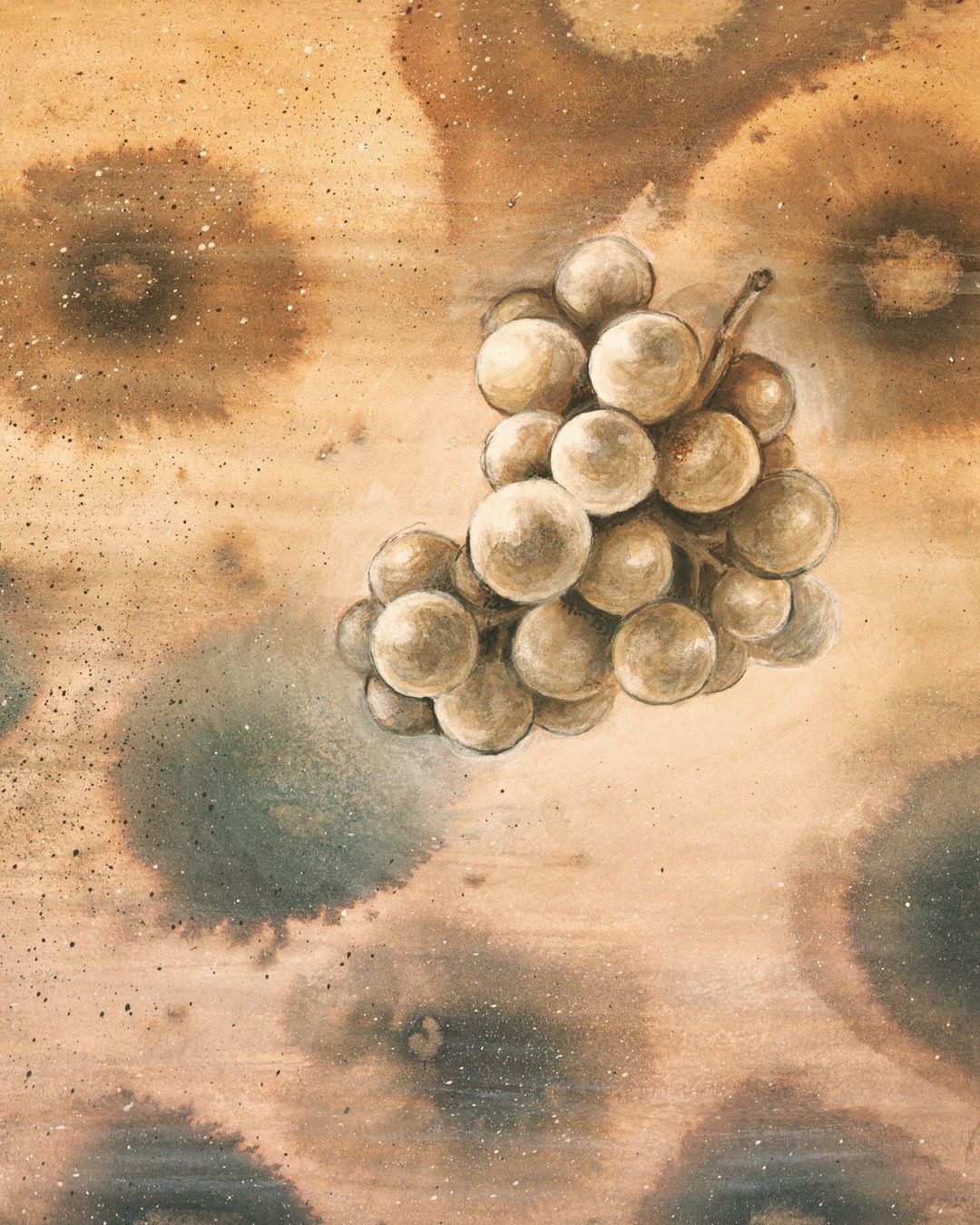
Deborah Kennedy
LAST GRAPE
Ink on wind-powered bristol paper
8″ x 10″
Recently, I ate a bowl of red grapes and marveled at the sweet bursts of juice. I hope we will begin to pay attention to the negative effects of climate change on our food supply. Otherwise, I fear food will become more and more expensive and then scarce. When will I enjoy my last bowl of red grapes?
The majority of table grapes are grown in California. Growers are threatened by escalating drought, floods, hail, fires, smoke damage, unpredictable rains, and freezes.
This year our current winter wheat crops are the worst in recent memory following a three-year drought.
However, some farmers are working to make our food systems more resilient. From the website at the danforthcenter.org here are two examples:
“California-based TerViva is commercializing a climate-resilient legume that can withstand harsh weather conditions. Its protein- and oil-rich seeds are a sustainable alternative to palm and soy.”
“Missouri’s Pluton Biosciences is developing a microbial spray that can be applied at planting and harvest to scrub nearly two tons of carbon from the air per acre of farmland per year, while replenishing nutrients in the soil.”
We need to focus on planning ahead for the challenges that are coming.
©2023 Deborah Kennedy
Teresa Stern
CONNECT TO NATURE ZINE
Available for download on Teresa’s website.
It contains 5 simple and easy creativity + nature activities you can enjoy year-round
Appropriate for all ages.
After a busy weekend filled with holiday gatherings, a winter art fair, and a little cyber shopping of my own, I’m directing part of the day to pause, reflect, and recharge with a mini nature break. Before I head outside, I offer here some sketches and images from my ongoing Connect to Nature project that celebrates our need for nature – for both individual and collective well-being and for the resilience infrastructure of our city trees, urban parks, and regional forests. Need your own recharge and reconnection – get outside, take three deep breaths – and see how many fall colors you can find! What’s your favorite fall color? Mine is that orangey-green-gold on the vine maples as the leaves just start to turn…
©2023 Teresa Stern
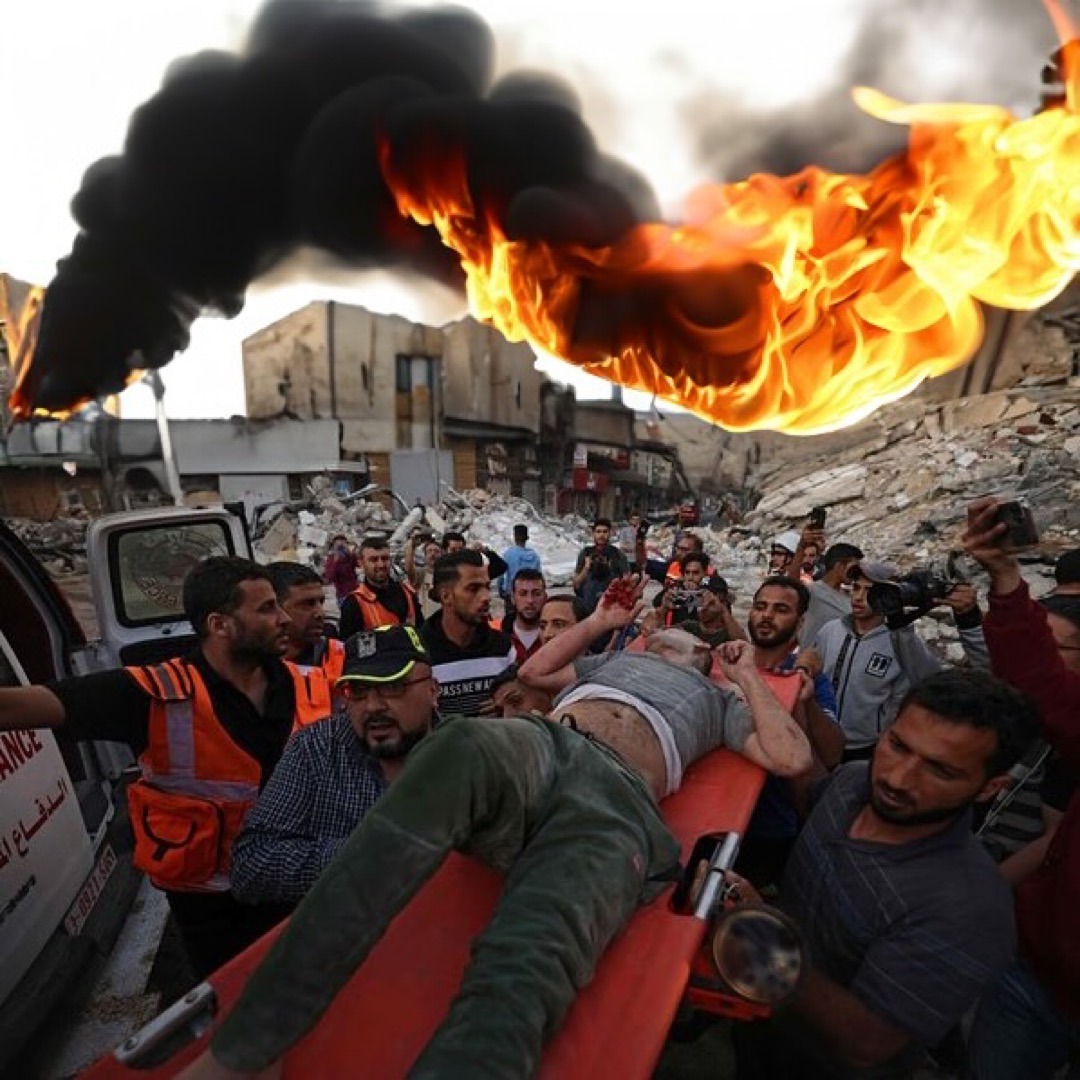
Marcela Villaseñor
ASSAULT ON HUMANITY
Digital composition
Original photo uncredited.
2023
Wars create a dysfunctional community system. But with community resilience, could it be possible to survive such destruction and chaos?
©2023 Marcela Villaseñor
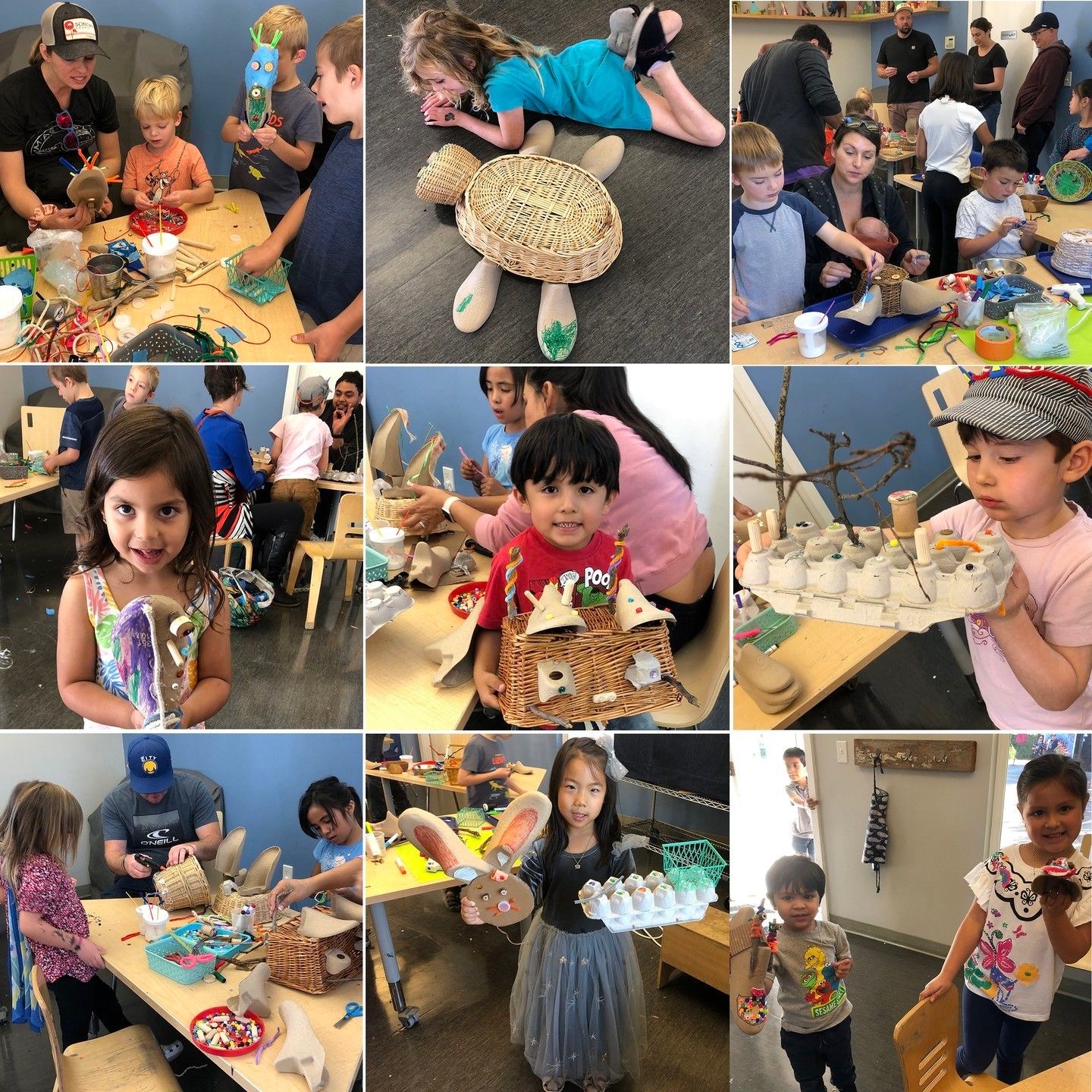
Susan Bercu
MASK MAKING
Workshop at the Children’s Museum, Sonoma County, California, US.
With a grant from Creative Sonoma
I was invited to lead a project with children and families to create masks and objects using donated recycled and found materials and complimentary activities with Recology Sonoma Marin. This community interactive event emphasizes respect for our planet’s limited resources. With the involvement of adults, these young children experience the power of their limitless imagination to create exciting objects without depending on commercial toys and kits. They are too young to understand the complex lessons in Part IV: Building Community Resilience. However, the art room at the museum was very busy demonstrating “Building community resilience means rolling up our sleeves and getting involved in the nuts and bolts of how society works.”
©2023 Susan Bercu
Celia Kettle
PLASTIC WAVE I -VII
Acrylic paint on plastic
50 x 20 cm
2022
In his lesson on ‘Meeting Essential Community Needs, ’ Richard Heinberg talks about the necessity for protecting regional water sources.
“Water is another human necessity, and the key to water resilience is the health of natural regional lakes, rivers, and streams. So, ensuring they are free from pollutants and that indigenous species thrive should be the principal resilience work in this area.”
Plastic Waves is part of the series ‘Ocean Within’, a collaborative art project with the artist Helena Blankenstein. Our project was primarily concerned with the contamination of the ocean from plastic waste; however, as well as collecting washed-up plastic bottles from the beach, I also found myself picking up discarded plastic, which I found lying around the city. A lot of this plastic had been packaged and wrapped around bottled drinks. Seeing discarded plastic bottles littering the streets made me wonder how many get washed into rivers and streams and eventually find their way to the ocean. I have a particular dislike for plastic bottled water not only because it is a petrol-based product that adds microplastic contamination to our water supplies but also because selling people the need to drink water from underground reserves harms the environment by depleting aquifers and other groundwater sources, which are very much in need when there are water shortages or droughts.
©2023 Celia Kettle
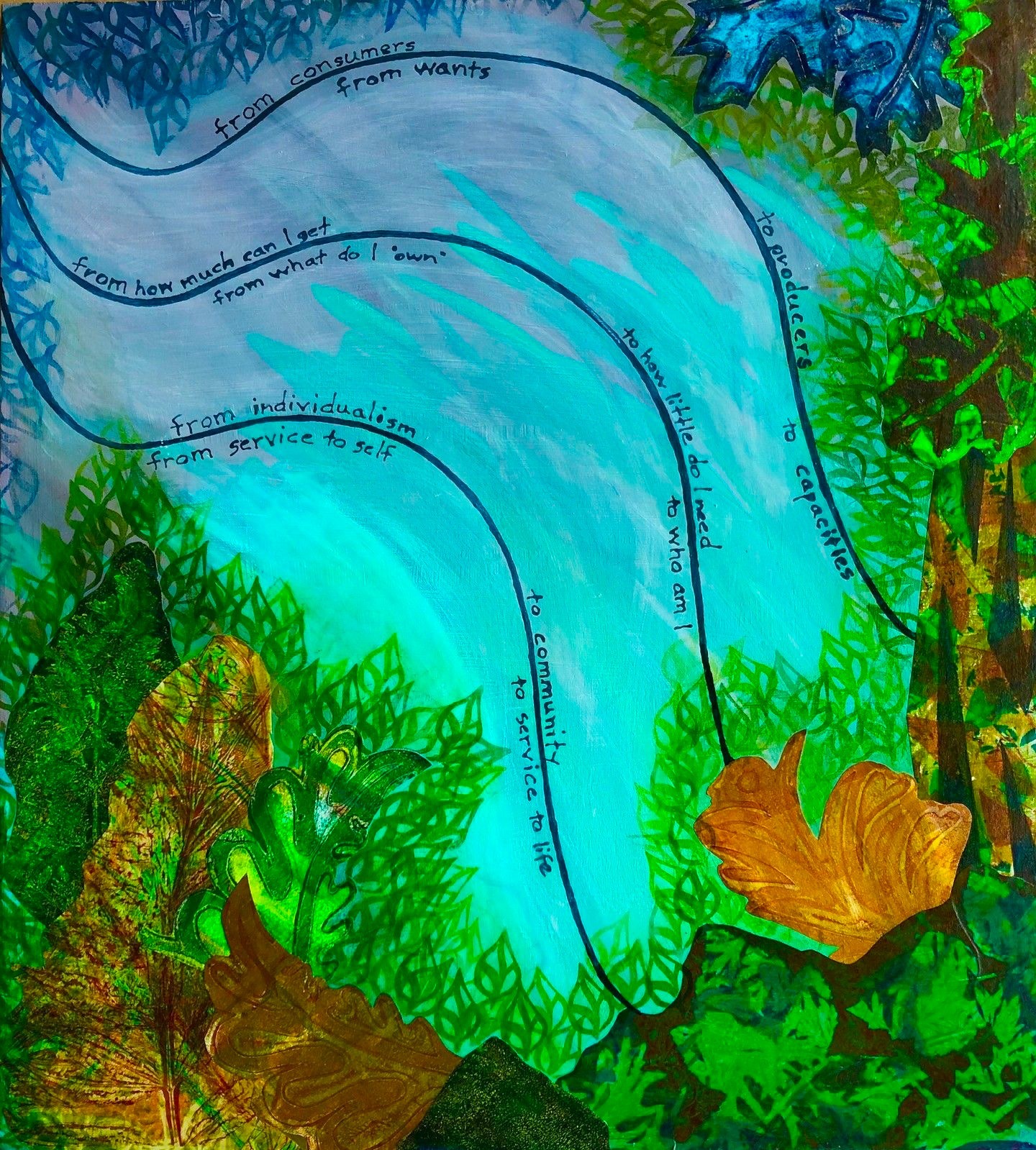
Peggy Rose
TO LIVE FOR ALL LIFE
Paint and paper on board
20”x 22”
Answering the art call of “Meeting Essential Community Needs” for What’s Next For Earth by raising the questions, “What is community?” and “What are needs?” And my question is, “How do we begin living as part of the web of life?”
The writing on the painting is: From consumers to producers From wants to capacities From how much can I get to how little do I need From what do I “own” to who am I From individualism to community From service to self to service to life
Richard Heinberg said, “Roll up your sleeves and get involved in the nuts and bolts of how life works.” (Paraphrase)
©2023 Peggy Rose
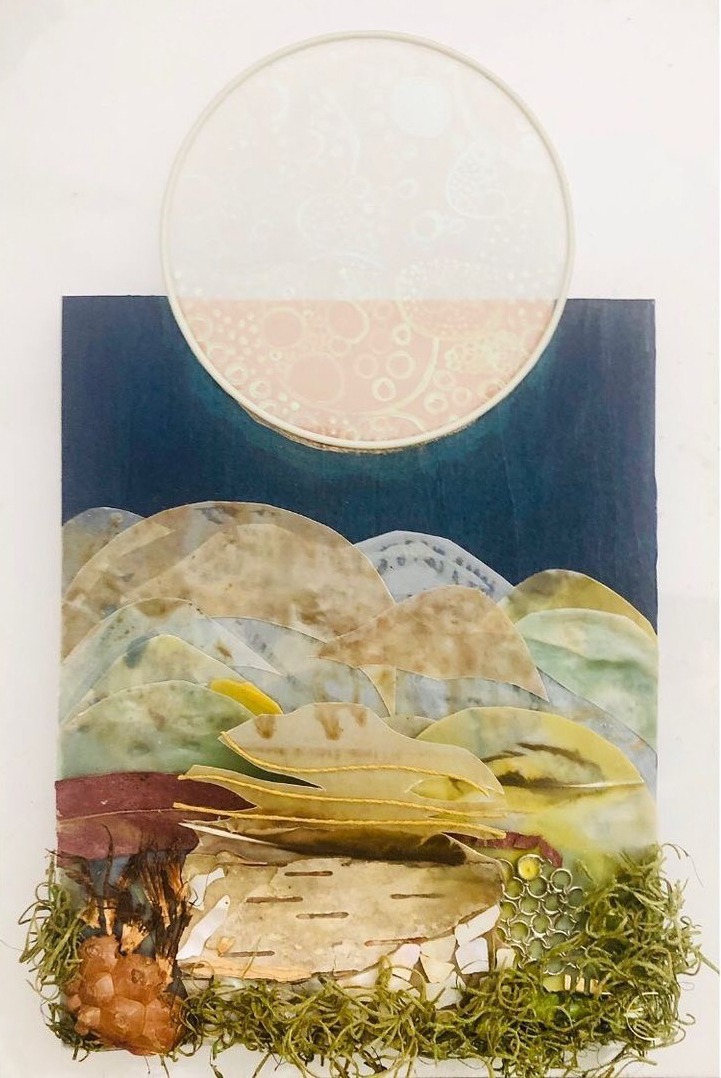
Yvonne C. Espinoza
WHAT PEELS AWAY
Mixed media on cradled wood panel
8” W x 14” H x 1” D
Air, water, and the soil that grows our food are foundational in our lives. And yet, as the years progress, the clarity of connection with these core elements often becomes buried under layers of routines, expectations, and aspirations.
Our daily journey is fraught with the allure of the easy and comfortable, topped with bewitching beauty. Like the crew in Homer’s Odyssey, we forget our goal to head “home.” We are whisked into an enchanted dream far disconnected from our truth—possibly even forgetting what is truly valuable.
On this night of the Beaver Moon, I take stock of what I need and am grateful for. I consider the journey to reveal the beauty of our air, water, and soil lies within us.
It begins with taking the time to look and SEE without the presets and presumptions of what we have been told to believe.
This deeper investigation leads us to explore every corner of this earth: a discovery that peels away that which no longer serves. Even then, all the cast-offs hint at something familiar. Like love, they evoke a timeless interconnectivity.
And here, at my current “coordinates,” I surmise that what matters consists of such connection.
It’s not about the hardship, the revolution, the fight, or even the dream.
The central focus must be the relationships: the forces that can stir us to act.
After all, what wouldn’t we do for love?
©2023 Yvonne C. Espinoza
Kim Tanzer
4 medicines: look/imagine
Instagram reels
A year ago I made a “fortune teller,” based on four sources of personal inspiration—walking, gardens, forests, and water– to prompt me to take local excursions exploring resilience in my own community. Following its “instructions” I took a one mile walk along Gainesville’s Highway 441 with a friend. Initially, I thought of the walk as a performance piece, demonstrating the bleakness of that suburban landscape. Instead, I realized that mile included all four of the medicines I need, if in an impoverished form.
Using the constraints imposed by Instagram Reels I have continued to explore transformations across time using various primitive time-lapse methods. In this case, I painted before-and-after versions of my walk, framed by the prompts “look” and “imagine.” The small images are painted in watercolor on Strathmore board, scanned, then further painted with watercolor and gel pens. The images are imported into ppt then saved and uploaded as a movie.
In reflecting on that walk, and Richard Heinberg’s call to consider essential community assets—food, water, energy, and money—I realized that all these assets could be enhanced anywhere, including along this one mile stretch of parallel highway and railroad tracks. Stormwater ponds and forests could be amplified, gardens could be planted and harvested. All could be accessed on foot or through newly improved mass transit connections.
In many cases, what we need is right here, if only we’d look. Can we go further, and imagine it into being?
About the Think Resilience Course
This exhibition is based on Think Resilience, Post Carbon Institute’s free online course. To respond to the art call, we asked the artists to signup and to watch the course, one lesson/video at a time. Each video is approximately 12 minutes long.
[Lesson 1: Introduction to the course]
CHAPTER 1: Our Converging Crises
- Lesson 2 – Energy
- Lesson 3 – Population and Consumption
- Lesson 4 – Depletion
- Lesson 5 – Pollution
CHAPTER 2: The Roots and Results of Our Crises
- Lesson 6 – Social Structure
- Lesson 7 – Belief Systems
- Lesson 8 – Biodiversity
- Lesson 9 – Collapse
CHAPTER 3: Making Change
- Lesson 10 – Thinking in Systems
- Lesson 11 – Shifting Cultural Stories
- Lesson 12 – Culture Change & Neuroscience
CHAPTER 4: Resilience Thinking
- Lesson 13 – What is Resilience?
- Lesson 14 – Community Resilience in the 21st Century
- Lesson 15 – Six Foundations for Building Community Resilience
CHAPTER 5: Economy and Society
- Lesson 16- How Globalization Undermines Resilience
- Lesson 17- Economic Relocalization
- Lesson 18- Social Justice
- Lesson 19- Education
CHAPTER 6: Basic Needs and Functions
- Lesson 20- Meeting Essential Community Needs
- Lesson 21- Resilience in Major Sectors
- Lesson 22- Review, Assessment & Action
Think Resilience is hosted by Richard Heinberg, one of the world’s leading experts on the urgency and challenges of moving society away from fossil fuels.
We live in a time of tremendous political, environmental, and economic upheaval. What should we do? Think Resilience is an online course offered by Post Carbon Institute to help you get started on doing something. It features twenty-two video lectures—about four hours total—by Richard Heinberg, one of the world’s foremost experts on the urgency and challenges of transitioning society away from fossil fuels. Think Resilience is rooted in Post Carbon Institute’s years of work in energy literacy and community resilience. It packs a lot of information into four hours, and by the end of the course you’ll have a good start on two important skills:
1. How to make sense of the complex challenges society now faces. What are the underlying, systemic forces at play? What brought us to this place? Acting without this understanding is like putting a bandage on a life-threatening injury.
2. How to build community resilience. While we must also act in our individual lives and as national and global citizens, building the resilience of our communities is an essential response to the 21st century’s multiple sustainability crises.
What’s Next For Earth is an art project created in March 2020 by Michele Guieu, eco-artist, and MAHB Art Editor, to understand the human predicament and reflect on the ecological emergency to take action. The MAHB and the Post Carbon Institute support the project. If you have any questions, please send your message to michele@mahbonline.org.
Thank you ~

